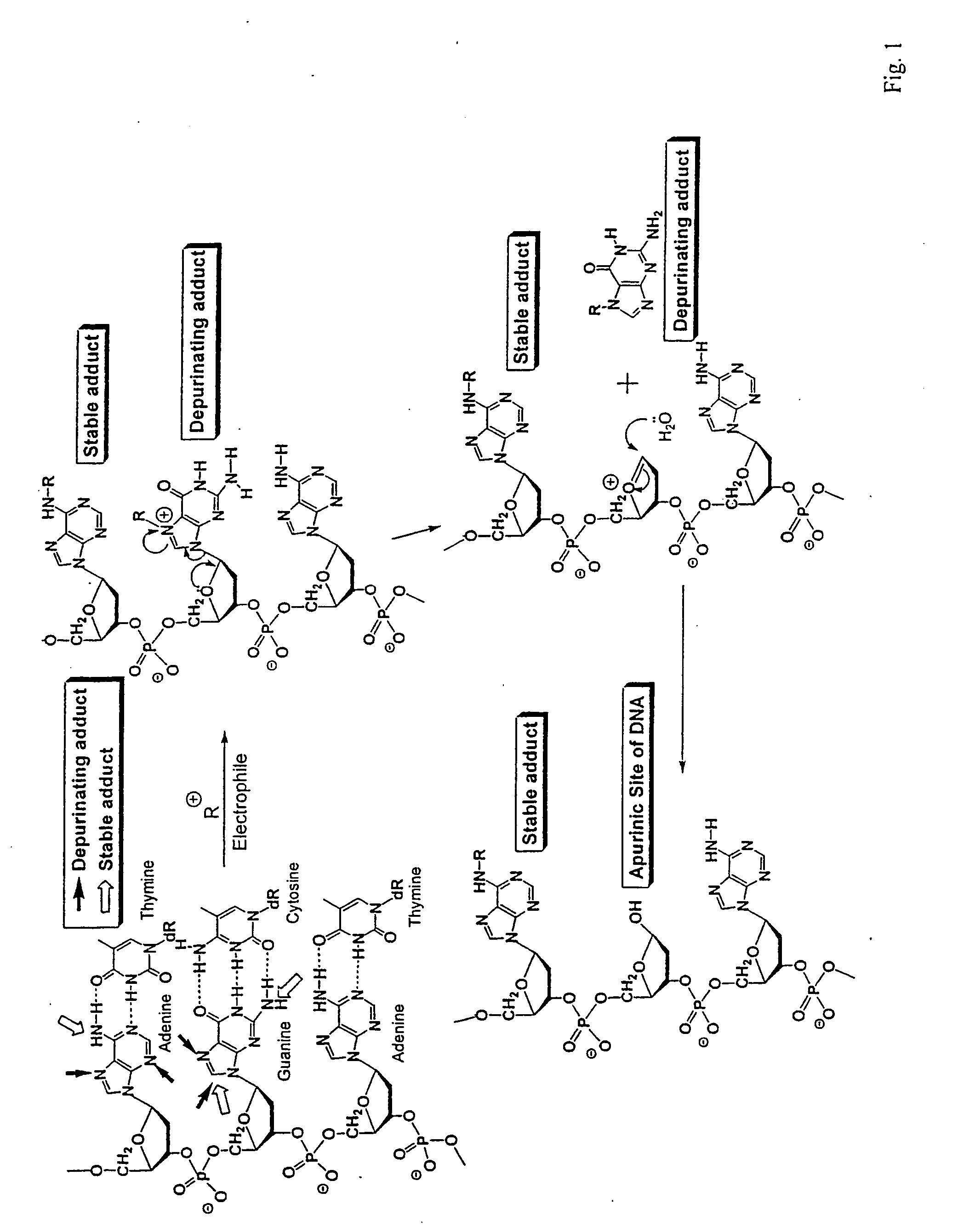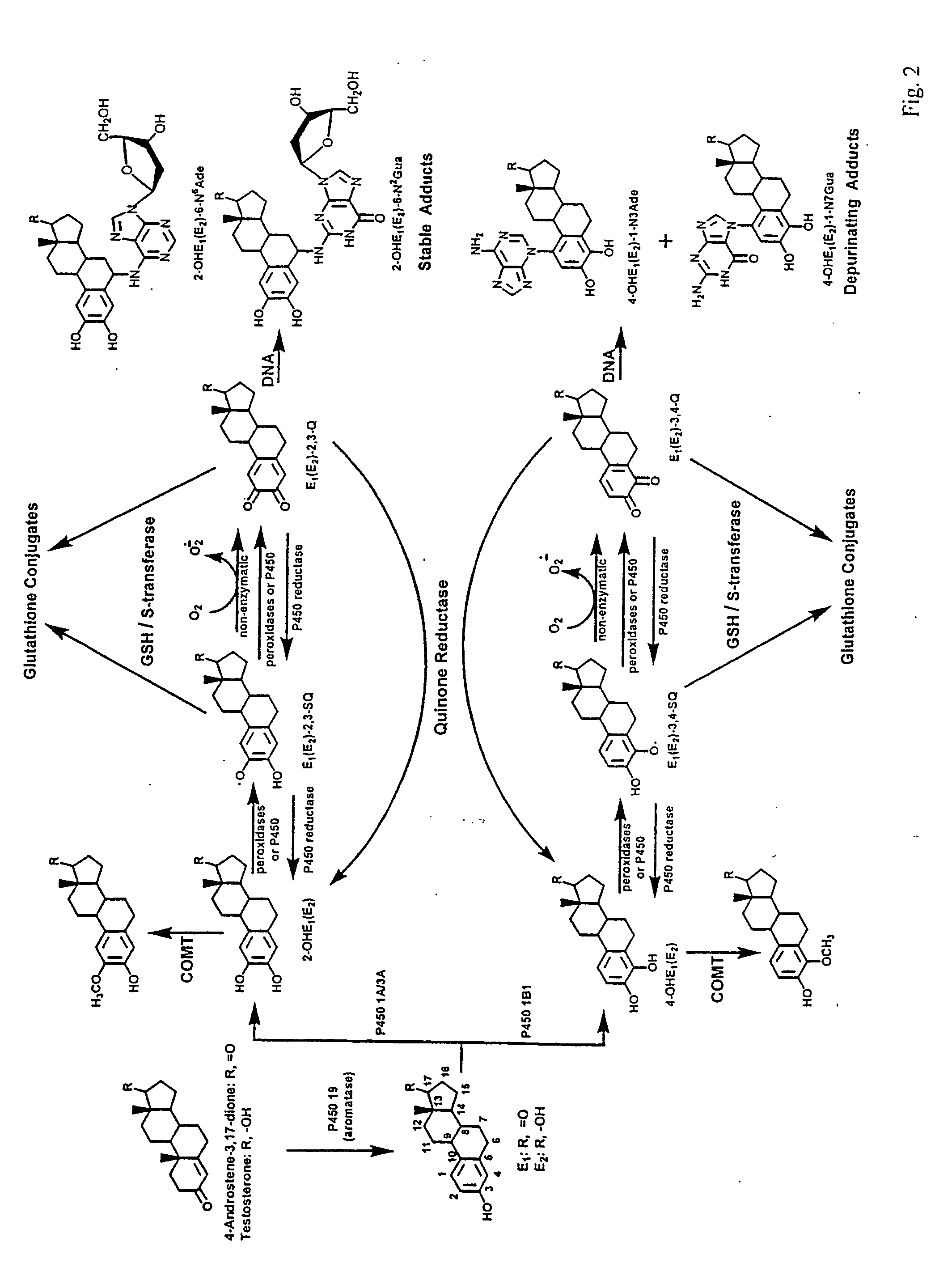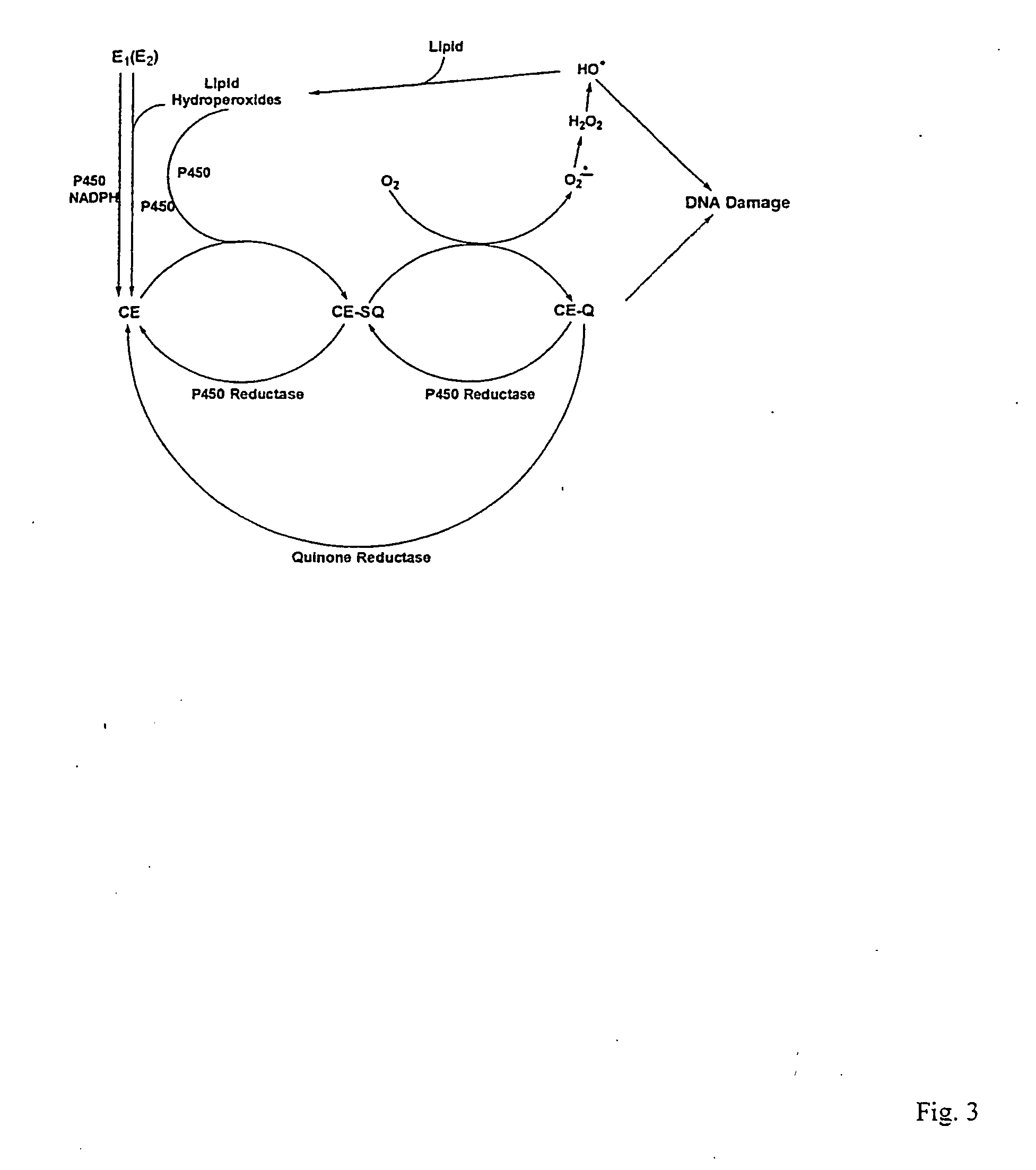Unifying mechanism and methods to prevent cancer and neurodegenerative diseases
a neurodegenerative disease and unifying mechanism technology, applied in the field of unifying mechanism and methods to prevent cancer and neurodegenerative diseases, can solve the problem of not having specific treatment methods available, and achieve the effect of preventing excessive cell growth and development/formation
- Summary
- Abstract
- Description
- Claims
- Application Information
AI Technical Summary
Benefits of technology
Problems solved by technology
Method used
Image
Examples
example i
Initiation of Cancer and Other Diseases by Catechol Ortho-Quinones: A Unifying Mechanism
Introduction
[0075] One of the major obstacles in cancer research is that cancer is a problem of 200 diseases. This viewpoint has impeded researchers from looking at the etiology of cancers because the search would be prohibitively complex. For this reason, the etiology of breast, prostate and other human cancers remains virtually unknown. While the expression of various cancers coincides with the above concept, some scientists consider there to be a common, but not yet elucidated, origin for many prevalent types of cancer.
[0076] There is widespread agreement in the scientific community that cancer is basically a genetic disease—not in the sense that most cancers are inherited, but in the sense that cancer is triggered by genetic mutations. Thus, cancer can be considered a disease of mutated critical genes that modulate cell growth and death. These include oncogenes and tumor suppressor genes...
example ii
Catechol Ortho-Quinones: The Electrophilic Compounds That Form Depurinating DNA Adducts and Could Initiate Cancer and Other Diseases
Introduction
[0118] An important pathway in the metabolism of catechol estrogens (CE) and catecholamines is the oxidation to their respective semiquinones and quinones. The basis of the biological activity of catechol quinones is related to their ability to act both as oxidants and electrophiles. As oxidants, catechol quinones redox cycle with their semiquinones, producing an elevated level of reactive oxygen species, a condition known as oxidative stress. As electrophiles, catechol quinones can form covalent adducts with cellular macromolecules, including DNA. These are stable adducts that remain in DNA unless removed by repair and depurinating ones that are released from DNA by destabilization of the glycosyl bond. Thus, DNA can be damaged by the reactive quinones themselves and by reactive oxygen species (hydroxyl radicals). The formation of depur...
PUM
| Property | Measurement | Unit |
|---|---|---|
| time | aaaaa | aaaaa |
| body weight | aaaaa | aaaaa |
| flow rate | aaaaa | aaaaa |
Abstract
Description
Claims
Application Information
 Login to View More
Login to View More - R&D
- Intellectual Property
- Life Sciences
- Materials
- Tech Scout
- Unparalleled Data Quality
- Higher Quality Content
- 60% Fewer Hallucinations
Browse by: Latest US Patents, China's latest patents, Technical Efficacy Thesaurus, Application Domain, Technology Topic, Popular Technical Reports.
© 2025 PatSnap. All rights reserved.Legal|Privacy policy|Modern Slavery Act Transparency Statement|Sitemap|About US| Contact US: help@patsnap.com



